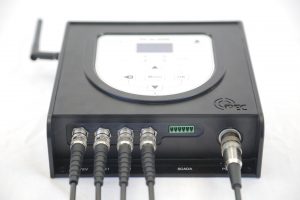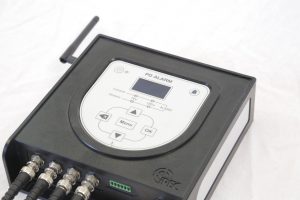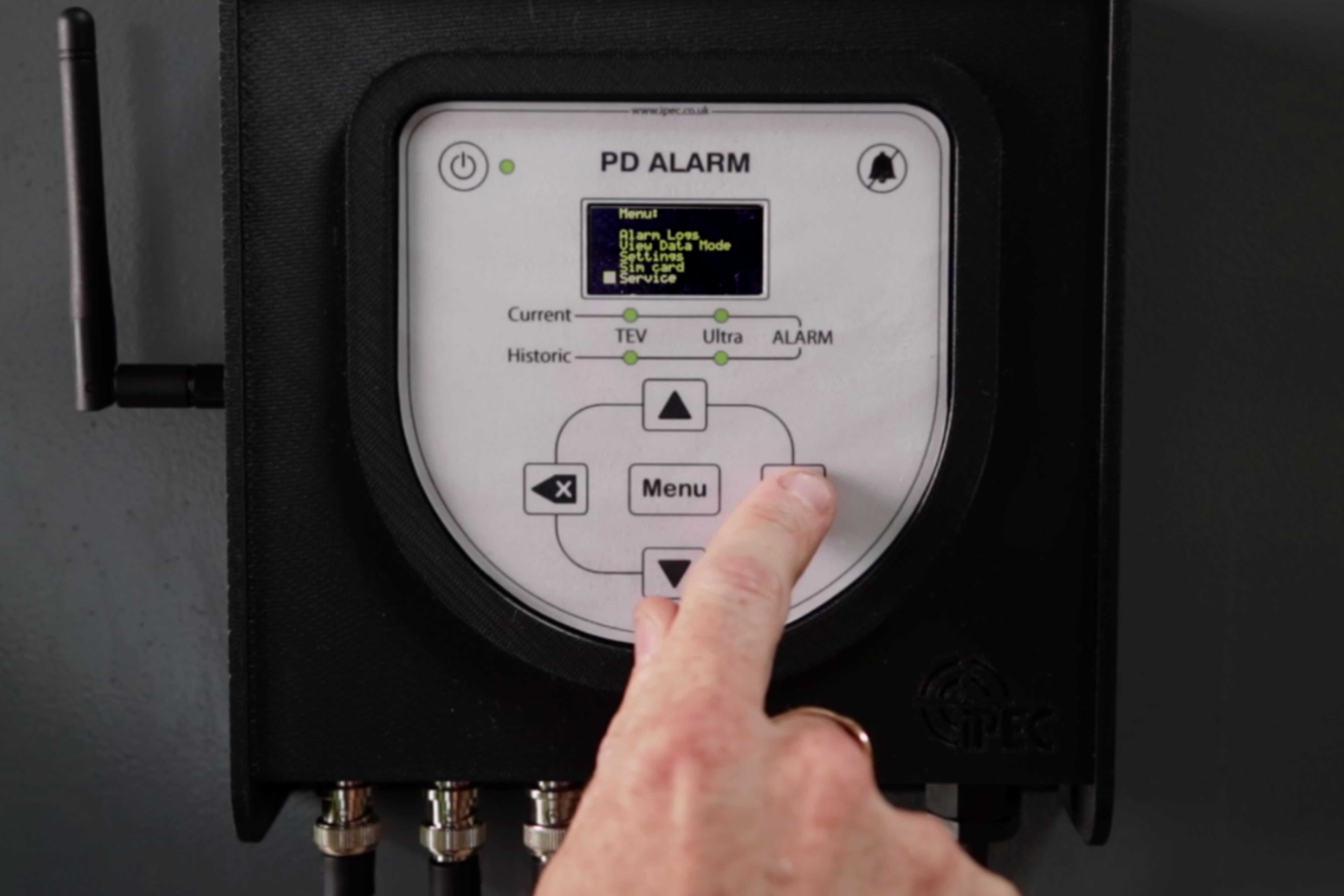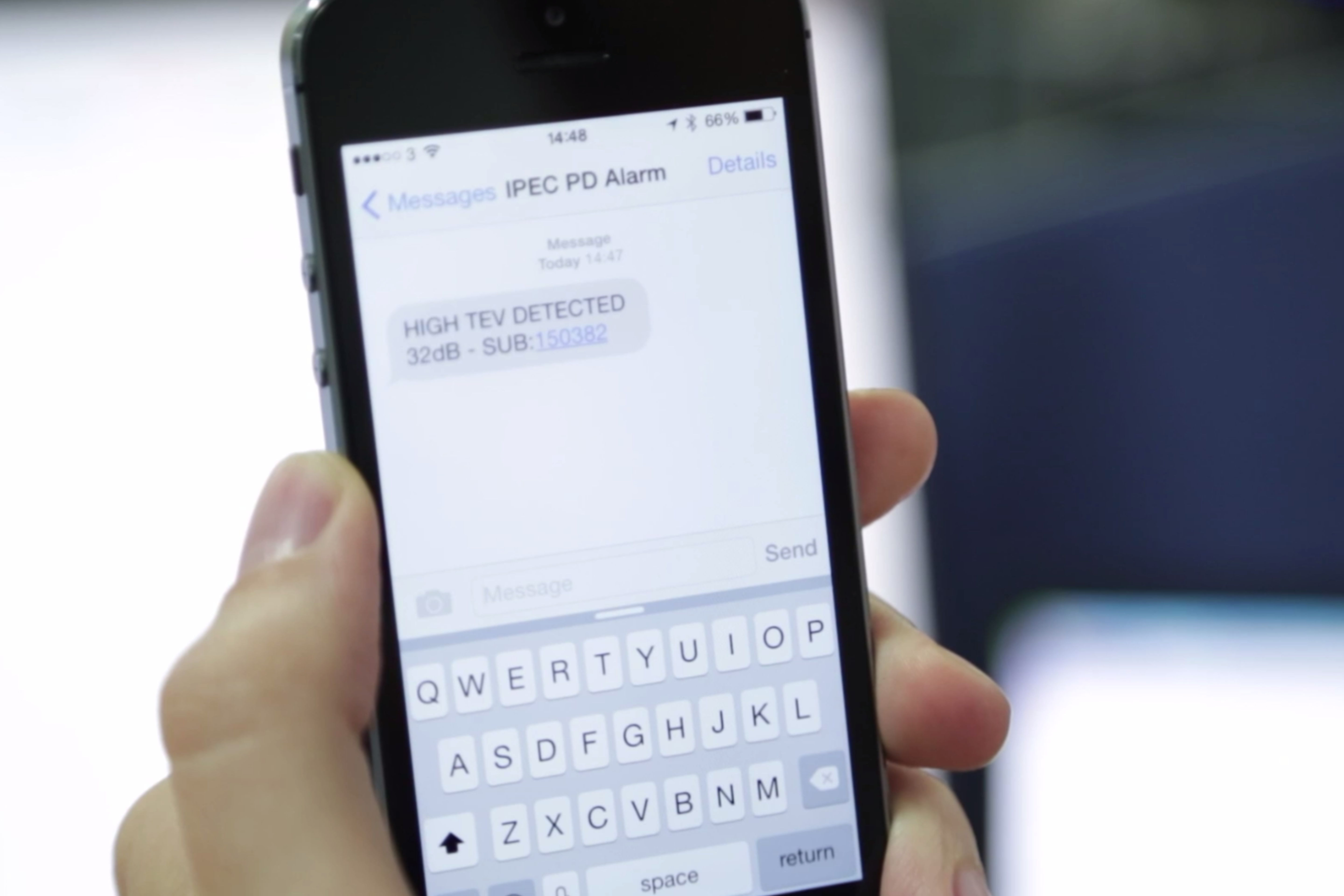Permanent Monitoring for Switchgear
The PD Alarm is an asset mounted device for indicating the presence of partial discharge in high voltage switchgear, ring main units (RMUs) and dry type transformers. Designed for use in small substations, the instrument can activate local and remote alarms in addition to local indication.
PD Monitoring of
- Data synchronisation to central server
- Log and trend PD activity against particular assets
- Automatic data integration with SAP
- Automatic high PD alerts to asset management team live from site
- Integrated Noise Detection Algorithm helps avoid ‘False Positives’
The Problem
In any network, the vast majority of assets are distributed via secondary substations taking HV down to LV for consumer supply. Often these assets are low in value but high in volume, therefore difficult to include in a condition monitoring programme;
- Traditional monitoring is too expensive
- Spot Testing cannot cover the high number of assets
IPEC’s new PD Alarm addresses this issue. Designed for large scale roll out it is now a cost effective system for PD monitoring over such a large asset base.
To highlight the intended sites in which the PD Alarm can be deployed, the diagram below shows the number of substations in a ‘typical’ large city. The PD Alarm is designed for these secondary substations, and is the only solution currently on the market for customers to monitor these assets cost effectively.
About the PD-Alarm
The PD Alarm is an asset mounted device for indicating the presence of partial discharge in high voltage switchgear, ring main units (RMUs) and dry type transformers. Designed for use in small substations, the instrument can activate local and remote alarms in addition to local indication.
The PD Alarm is built into a tough case that magnetically mounts to the RMU. Installation is very quick and simple with only a power connection required to get the system operational. Alarms can be configured to operate either locally with SCADA or remotely using an optional integrated modem.
The system incorporates algorithms that distinguish noise from real PD, significantly reducing the likelihood of getting false alarms. The status and PD levels are displayed on a bright OLED display at the front of the unit.
Sensors
- TEV – The Transient Earth Voltage transducer is external to the unit to measure internal PD
- Ultrasonic – Ultrasonic sensors are connected to the unit and positioned around the substation
Noise Rejection
The PD Alarm applies effective noise rejection algorithms that can reliably distinguish between real PD and Noise. This means the system raises very few false alarms.
Communication and Alerts
The PD Alarm can send communications via two methods, SMS or SCADA. If the customer has local RTU’s installed, an alert can be sent through the existing SCADA network. If there is no SCADA connection then alerts can be sent via SMS to a central serve, hosted by IPEC, which will then generate an email.
- SCADA – The Transient Earth Voltage transducer is external to the unit to measure internal PD
- SMS – Optional GSM module for alerts via SMS
- Email – SMS module can communicate with mail server to generate smart email alarms
- Volt Free Relay Contacts – for local alarm systems
Key Features
- Display – Ultrasonic and TEV level displayed in dB
- Alarms – Current ‘live’ alarms and historical alarms
- TEV PD Detection – Measurement of electrical transients generated by internal PD
- Ultrasonic PD Detection – 3 independent ultrasonic channels detecting surface PD
- Intergrated Noise Detection – Algorithm helps avoid ‘False Alarms’
- Simple to Install – No wiring required between PD detector and central hub



